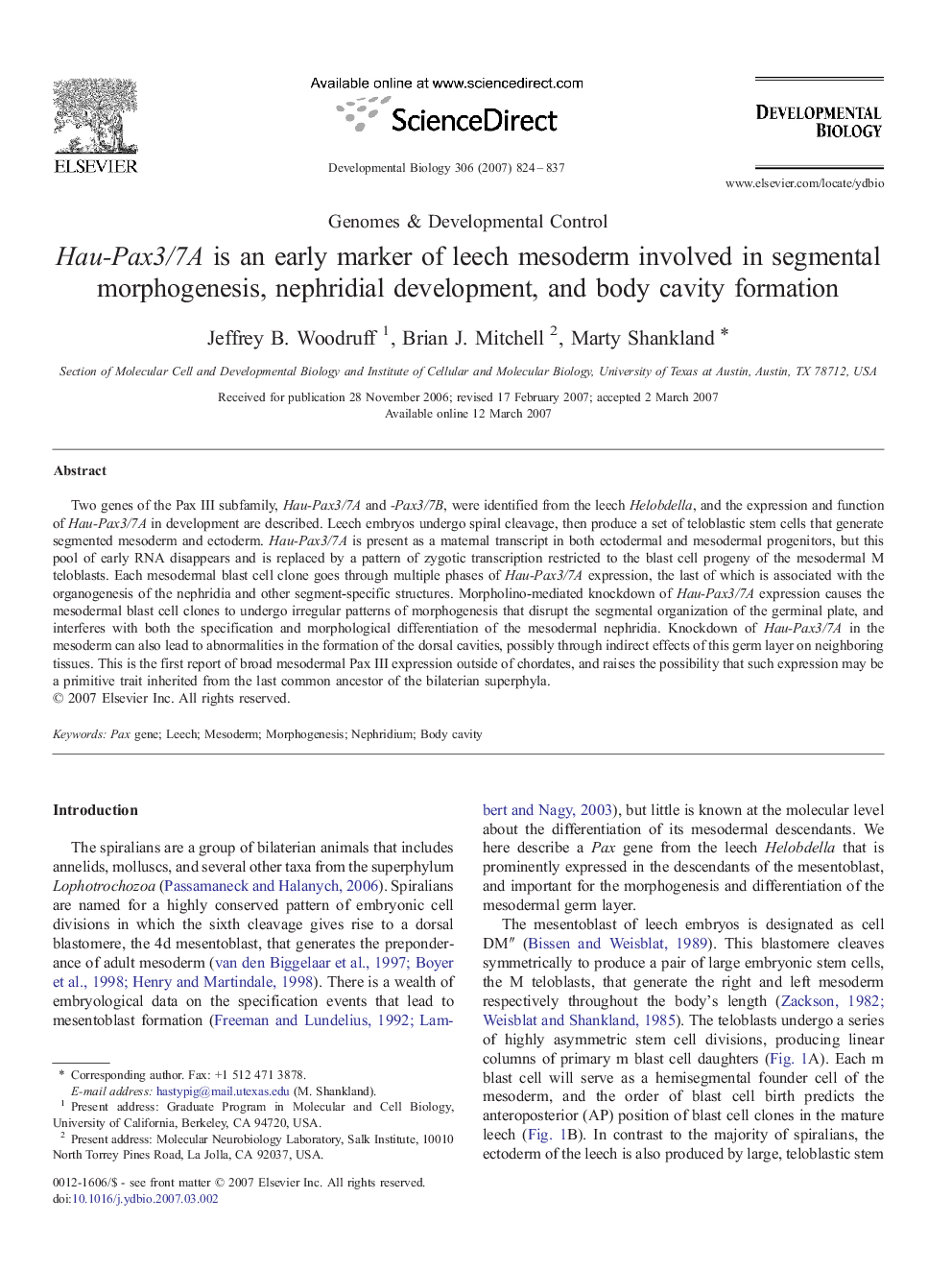| کد مقاله | کد نشریه | سال انتشار | مقاله انگلیسی | نسخه تمام متن |
|---|---|---|---|---|
| 2175248 | 1093834 | 2007 | 14 صفحه PDF | دانلود رایگان |

Two genes of the Pax III subfamily, Hau-Pax3/7A and -Pax3/7B, were identified from the leech Helobdella, and the expression and function of Hau-Pax3/7A in development are described. Leech embryos undergo spiral cleavage, then produce a set of teloblastic stem cells that generate segmented mesoderm and ectoderm. Hau-Pax3/7A is present as a maternal transcript in both ectodermal and mesodermal progenitors, but this pool of early RNA disappears and is replaced by a pattern of zygotic transcription restricted to the blast cell progeny of the mesodermal M teloblasts. Each mesodermal blast cell clone goes through multiple phases of Hau-Pax3/7A expression, the last of which is associated with the organogenesis of the nephridia and other segment-specific structures. Morpholino-mediated knockdown of Hau-Pax3/7A expression causes the mesodermal blast cell clones to undergo irregular patterns of morphogenesis that disrupt the segmental organization of the germinal plate, and interferes with both the specification and morphological differentiation of the mesodermal nephridia. Knockdown of Hau-Pax3/7A in the mesoderm can also lead to abnormalities in the formation of the dorsal cavities, possibly through indirect effects of this germ layer on neighboring tissues. This is the first report of broad mesodermal Pax III expression outside of chordates, and raises the possibility that such expression may be a primitive trait inherited from the last common ancestor of the bilaterian superphyla.
Journal: Developmental Biology - Volume 306, Issue 2, 15 June 2007, Pages 824–837